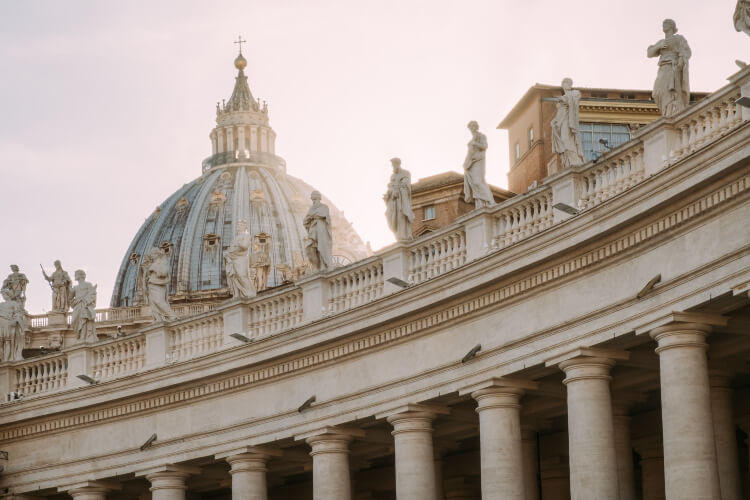You’ve seen it on the Vatican flag: a beehive-shaped object, with three crowns fitted on it and a cross at the top. It’s the papal tiara. Although the Holy See’s Coat of Arms is the only place where it makes an appearance these days, the tiara has a long and illustrious past.
The first documentation we have of it is from the 8th century. It turns up in an account of Pope Constantine’s papacy as a head-covering worn by the pope for non-liturgical events, such as papal audiences.
It was simply a white, helmet-shaped cap, originally modeled from a headdress reserved for Byzantine royalty. After Pope Constantine, every pope had a tiara. In its first few centuries, it underwent some variations.

It’s not certain when the first crown was added to the cap, but it was definitely there by 1130 A.D. Boniface VIII, in the 13th century, added a second crown to the cap. By 1315, the third crown had appeared.
This three-crowned cap—sometimes called the triregnum—was the most common form of the tiara, although the one- and two-crowned variations appeared occasionally over the next century.
Since the 15th century, however, the tiara has remained the same as we see it today. It was retired from the papal regalia during the pontificate of John Paul I.
Although there is no documentation on the reason behind the tiara’s development, it is generally held that the tiara symbolized the pope’s trifold power: Father of Kings, Governor of the World, and Vicar of Christ.
Over the centuries, the Church has frequently seen ornamental garments or accessories which carry beautiful, symbolic meaning. Why not carry on the tradition with our Sacred Heart Dangle Earrings? These crimson hearts set in gold-plated sterling remind us of the Love of the Divine Heart. Pick up a pair today at The Catholic Company!
























